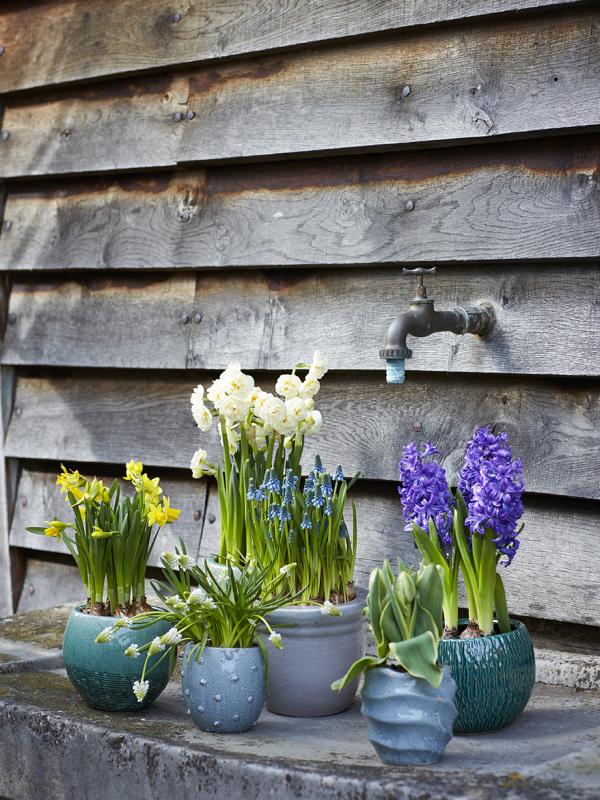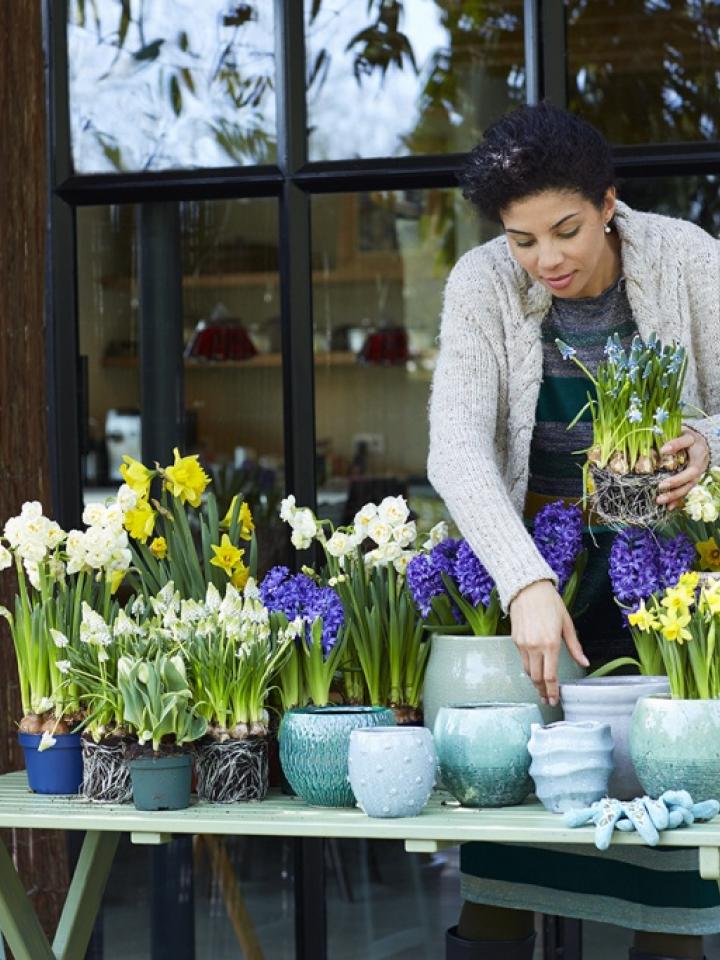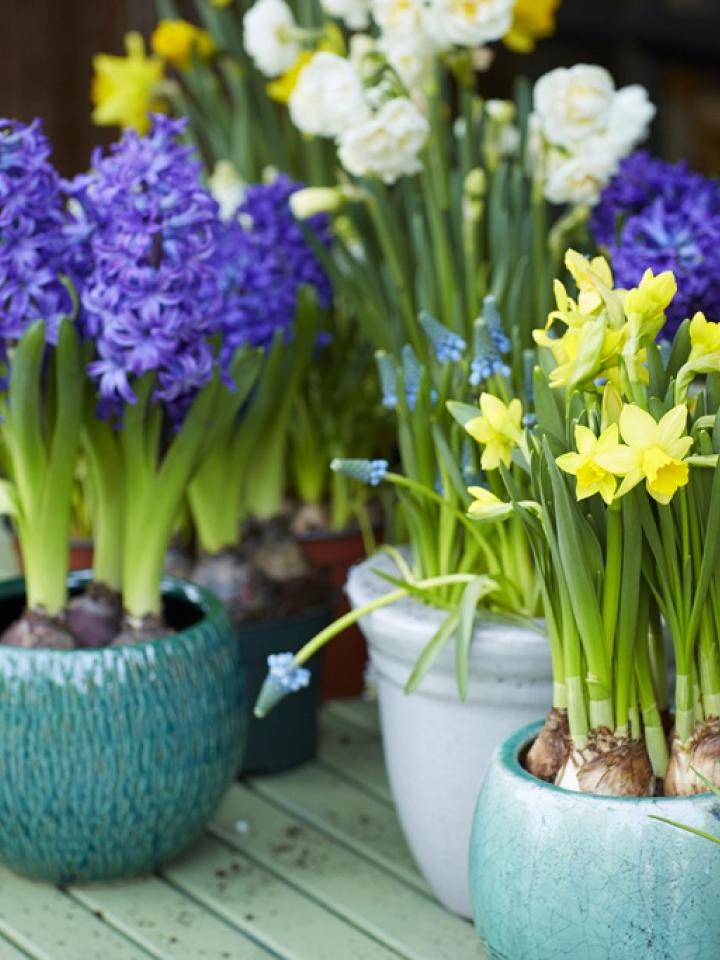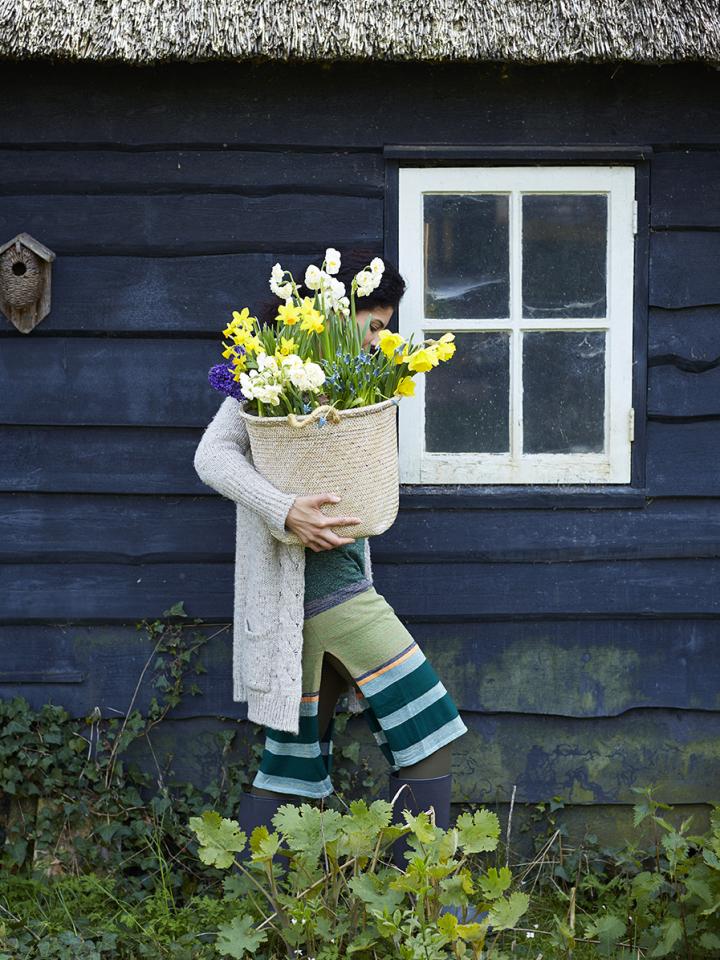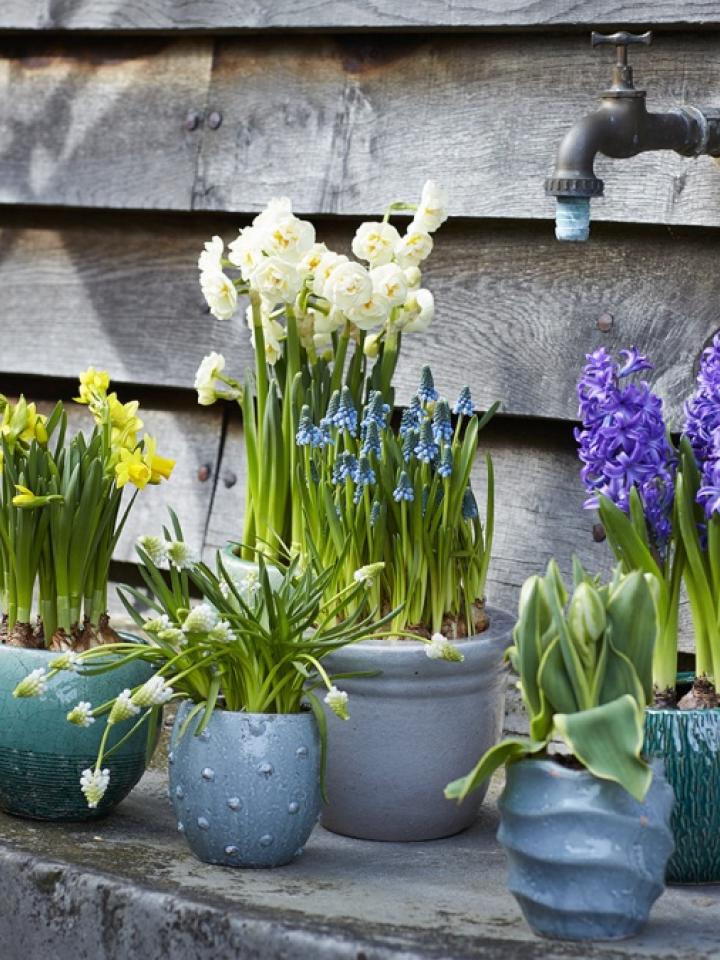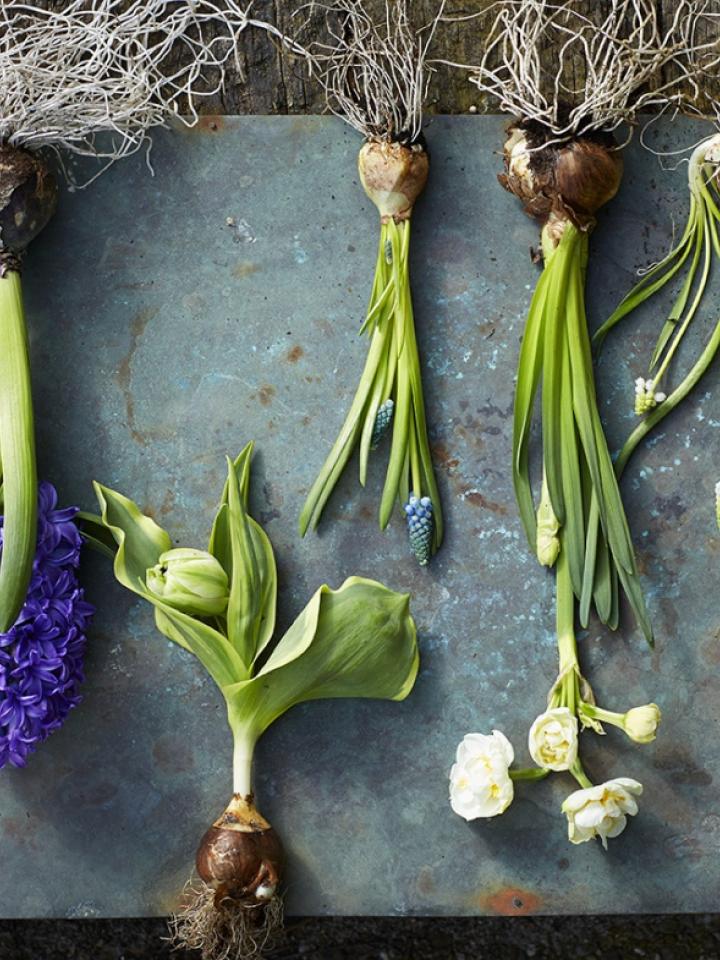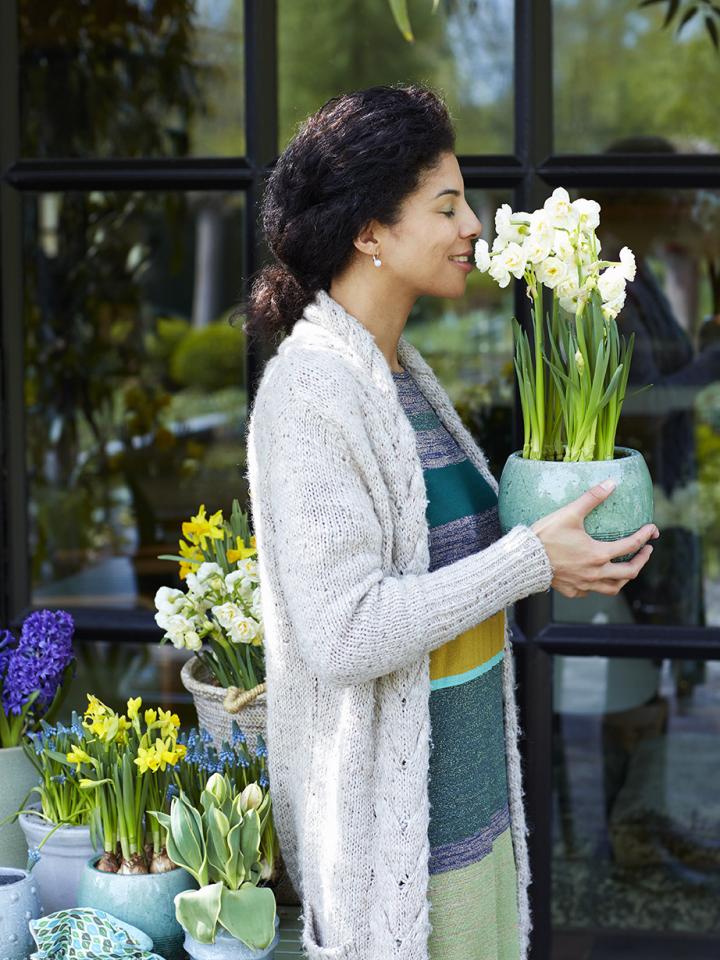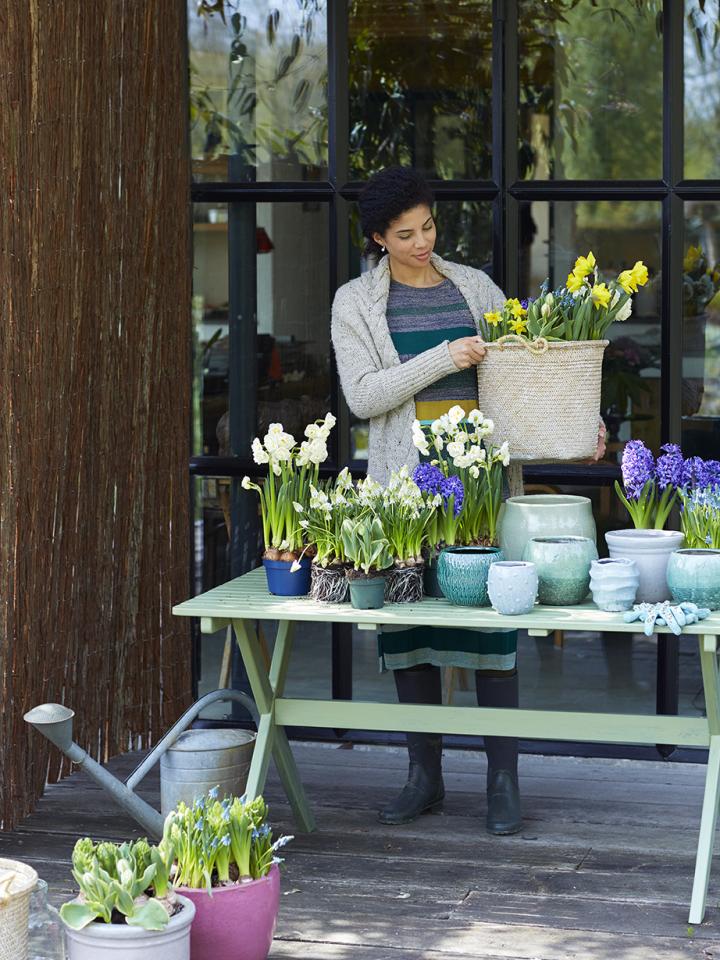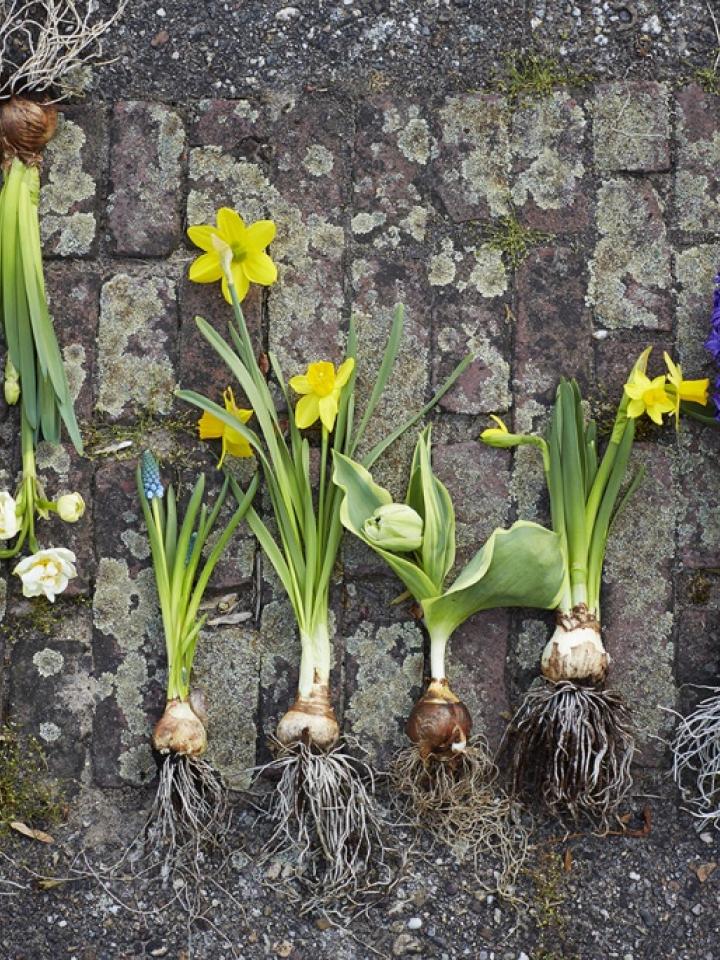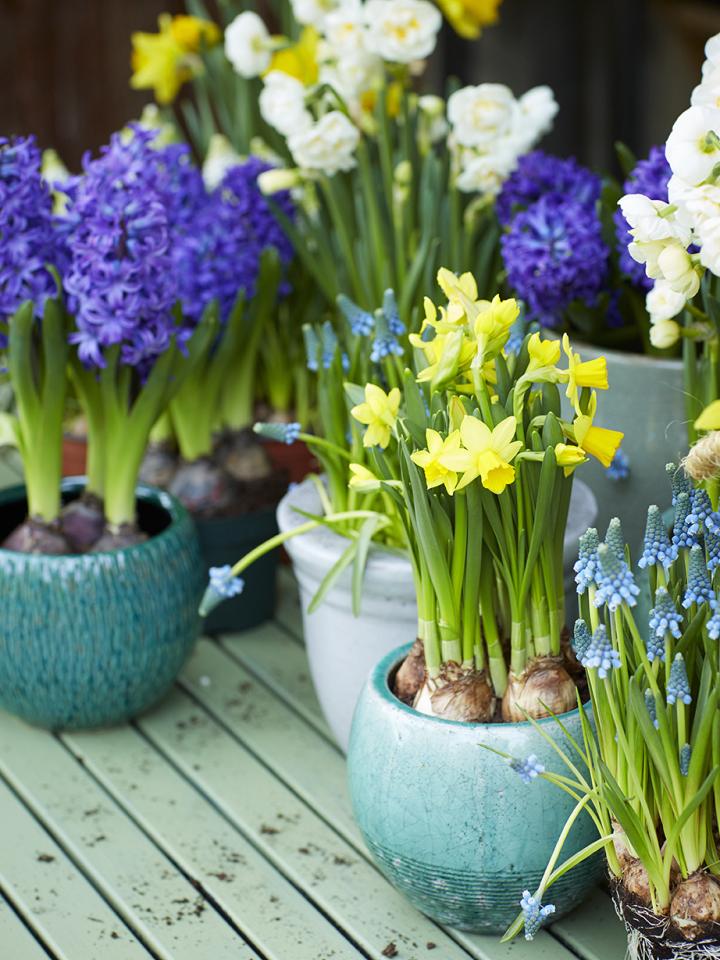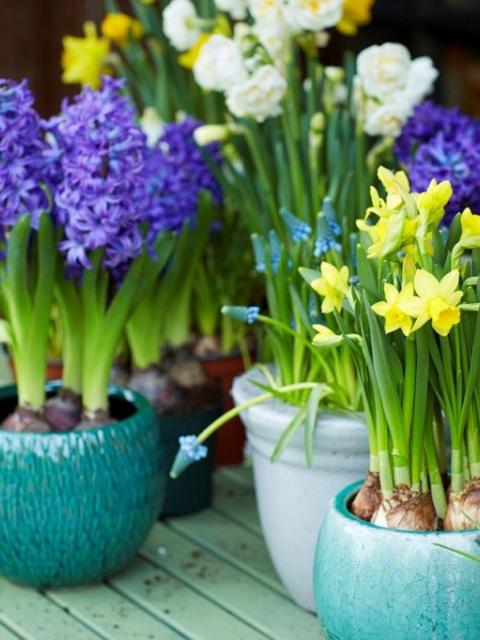Grape hyacinth (Muscari) is one of the first plants to show colour when everything else still looks bare and is hibernating. First you see only green shoots, but soon a splash of blue, white or pink emerges. That grows into a small spike made up of tiny balls. From a distance it looks just like a bunch of grapes - hence the name. Depending on the variety, the flowers can be powder blue, azure, royal blue or indigo, and there are also white and pink grape hyacinths. Potted grape hyacinths have been optimally prepared by the grower to brighten your garden or patio straightaway, and flower in February and March through part of April. They can be transferred from the pot to beds, but also do well on the garden table. Since they reach a height of 10-25 cm, the effect is best in a low, wide container or bowl.
Eurasian spring bloomer
Grape hyacinth is native to the whole of Europe, Russia and northern Asia, and spreads readily. Once the bulbs are in the soil, more will grow. In the wild the plant particularly occurs in verges and woody areas. The grape hyacinth has part of our surroundings for a long time - the plant is first referred to in botanical documents dating from 1601. What’s unusual is that plant experts cannot agree which family it belongs to. Purists believe that it’s a member of the Asparagus family, which includes both the vegetable and herbs and (climbing) plants. However, a more modern classification assigns the grape hyacinth to the hyacinths. There are 42 recognised species, of which the blue is the best-known.
Grape hyacinth trivia
-
The name Muscari is derived from the Greek word móschos musk, and refers to the scent.
-
The grape hyacinth symbolises humbleness and modesty, because you need to kneel to admire it. That’s another reason for putting them in a bowl on your garden table: you can see them much better.
-
The best-known collection of grape hyacinths in the world is the ‘Blue River’ which runs through Keukenhof in Lisse in the Netherlands.

